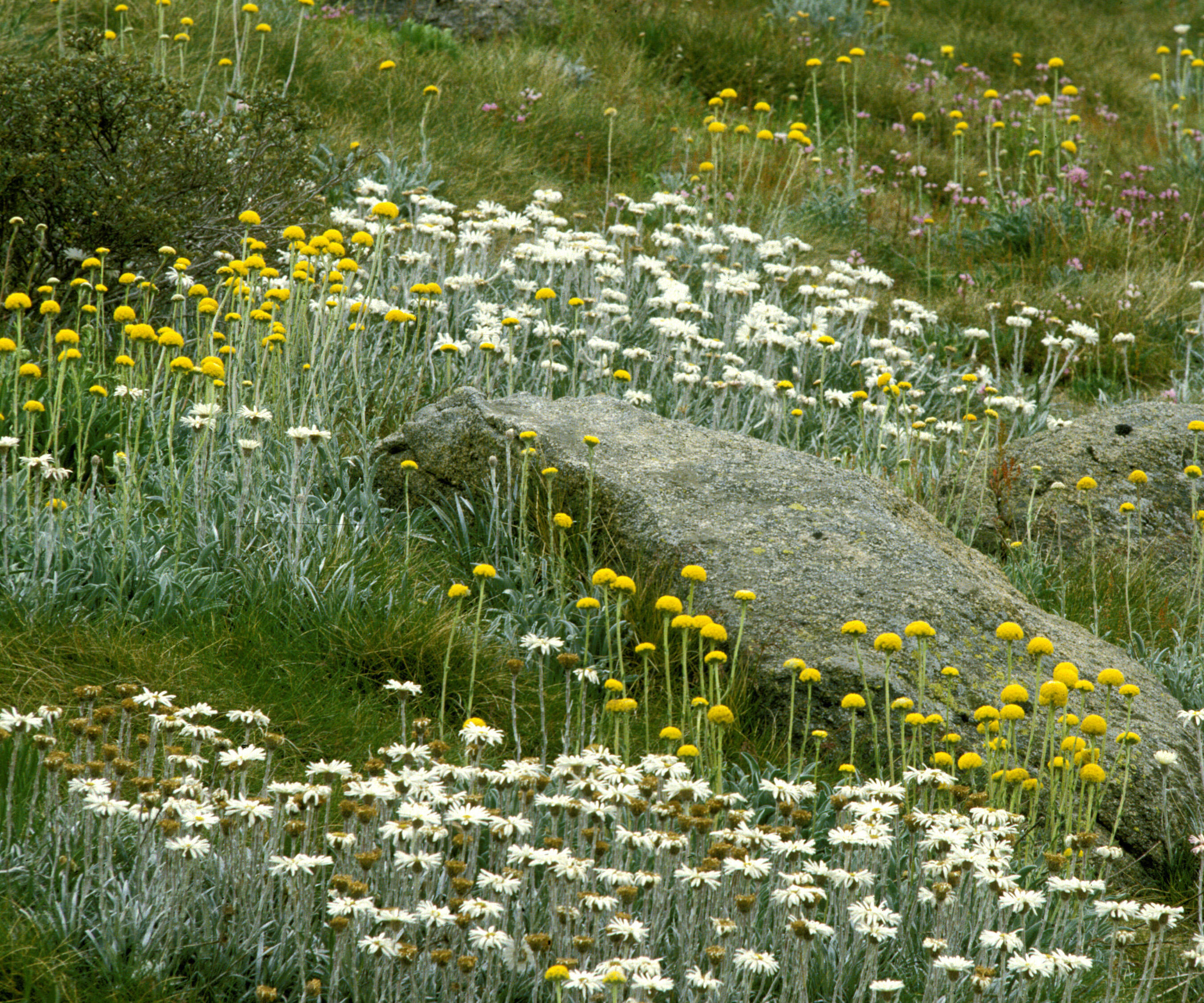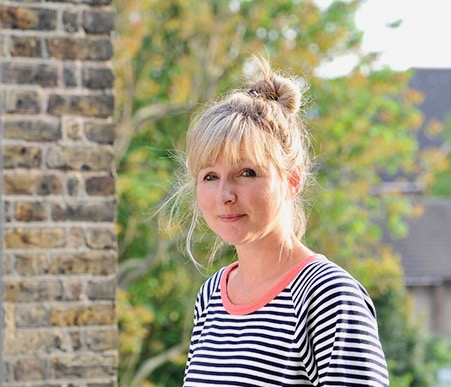How to grow craspedia – these unusual spherical flower heads will add charm and color to any yard
With striking yellow flowers, craspedia looks impressive both in borders and in vases


Originating in Australia and New Zealand, Craspedia globosa, also known as 'billy button' or 'drumstick flower', is a beautiful and unique plant that is adored by cut flower farmers and floral designers.
With its striking round yellow seed heads, learning how to grow craspedia in your yard is sure to add color and interest to your landscape. An evergreen perennial in its natural habitat and warmer regions of the world, craspedia can also be grown as an annual in colder areas.
I love these unusual blooms and think that craspedia makes a charming addition to any yard. It's also easy to dry and display a few simple stems in a vase. What more could you ask for? Here's how to get started with growing this species.
How to grow craspedia

Whatever your reasons for wanting to grow craspedia, it is a good plant to propagate from seed and include in your seed sowing schedule.
'While craspedia isn’t exactly easy to grow, it is growable if you can provide the necessary conditions,' says Matt Mattus, director of horticulture, American Horticultural Society.
'The best plants are started from seed. Sow seed indoors, under lights, where it is warm. Provide bottom heat to keep the soil close to 75° F and be patient, as the seed germinates slowly (up to 20 days). Sow seed at least 6-8 weeks before your frost-free date.'
Don't fancy growing from seed? Try these Craspedia, Drumstick plant bundles from Burpee instead.
Design expertise in your inbox – from inspiring decorating ideas and beautiful celebrity homes to practical gardening advice and shopping round-ups.

Matt Mattus has been involved with horticulture since he was a kid, working in his parent’s garden, and by age 12 he was entering the local horticultural society competitions. After a creative career in design, several books on gardening, and active membership of many plant societies, today Matt sits as the Senior Director of Horticulture for the American Horticultural Society (AHS) in Washington, DC-and gardens in Massachusetts.
Growing habits of craspedia

This low-maintenance, drought-tolerant plant grows taller than you might expect, often reaching 2-3 feet tall.
Plant craspedia in the spring or summer and space plants at least a foot apart to ensure good air circulation, especially if you live in an area that experiences humid summer weather.
'The ideal outdoor site is not necessarily in your flower border,' says Matt. 'Try somewhere that allows for planting in a row or a grid with few, if any, neighbors growing nearby, as good air circulation and minimal competition from other plants will be beneficial. Planting Craspedia in a row in a raised bed is your best bet.'
This Cedar raised bed from Burpee is naturally rot-resistant and is easy to assemble when you find the best spot for your plants.
'A site with full sun is essential, as these are sun-loving plants, and they won't grow well unless they receive at least 6 hours of direct sunlight,' continues Matt.
'One of the significant limitations is that Craspedia dislikes acidic soil, making cultivation in much of the East more challenging.
'Pinching back young plants will stimulate more branching from the base and will result in longer stems and more flowers.
'Pinch out the primary growing point in the center of the plant a week or two after you place the plants into the garden.
'A slow grower, you can expect blooms in 60 to 90 days, which makes craspedia a better flower for gardens in warmer climates.
'Botanically, it is a tender perennial, and while it won't winter over in the north (where the ground freezes), plants may survive a mild winter in zones 8 or warmer.'
Bobby Bowen, horticulturalist for Garden Club Plants and Farmer Bailey concurs.
'Zone 8 is a borderline zone where the plants may or may not survive depending on the severity of the weather. In zones 9 and warmer, you should be a little more guaranteed to grow Craspedia as a perennial.
'Zones 7 and colder, plan to grow them as an annual. Plugs can be planted out at the time of your last frost... they can handle some cooler temperatures but should be protected from frost.
'Craspedia should do well across most of the USA, possibly suffering from prolonged periods of saturated soils in areas with high rainfall. The more sun you can give them the better.'

Farmer Bailey and Garden Club Plants horticulturalist Bobby Bowen has been growing local and sustainable cut flowers since 2015 as Seed to Snip. Degreed in Art and Science from the University of Guelph (Ontario, Canada), Bobby is motivated by environmental sustainability, ecosystem biodiversity, and urban garden design.
Care for craspedia

Soil: Craspedia prefers sandy, loam, neutral to alkaline, well-drained soil. 'Incorporating sand will help, as the plants are highly prone to fungal diseases, particularly Fusarium, especially if the soil isn’t well-draining,' says Matt. 'Sand will aid in improving drainage.' Check how acidic or alkaline your soil is with this soil pH kit from True Leaf Market and amend accordingly.
Light: As outlined already, this plant loves the sun and will do well in a sheltered south or west-facing spot of the garden with at least six hours of direct sunlight each day.
Watering: Generally, water weekly unless it has rained. 'Craspedia is native to Australia, so it doesn't like wet feet,' says Bobby. 'It needs regular irrigation, but the soil needs time to dry out between waterings. 'Irrigation once a week to saturate the soil is likely adequate, but if it rains once or twice, you're probably OK. It depends on the soil as well. Sandy soils need more frequent irrigation compared to clay-based soil, which holds moisture better. Just remember, damp soil, but it absolutely must be well-draining. Like all plants, if it's wilting, it's thirsty (unless you've overwatered it and the roots have rotted out, in which case it's wilting because it has received too much water and doesn't have any way to draw the water up into the leaves).
Fertilizing: 'Like all plants, Craspedia needs nutrients,' says Bobby. 'Although if they are planted into nutrient-rich soil, you likely won't need to fertilize through the season. If your soil is void of natural organic matter, incorporate some compost and pelleted fertilizer at the time of planting. Craspedia are by no means heavy feeders, they will do OK in fairly poor soil. However, Craspedia also benefits from some diluted water-soluble fertilizer in their irrigation water every two weeks or so. A fertilizer with a balanced N:P:K ratio should suffice.'
Deadheading: Deadheading is recommended, as with most flowering plants, it prevents the plants from wasting energy on seed production and instead channels the energy back into flower production. 'Craspedia flowers are actually a cluster of florets which open individually from the bottom of the ball up to the top,' explains Bobby. 'When the ball of florets has fully opened and starts to brown, or turn a little unsightly, it's time to cut it off. If you want to harvest the cut flowers and use them in fresh floral arrangements, harvest when about half the florets are open. If you would like to harvest them to dry, harvest when all the florets are open but before they have started to deteriorate.'
FAQs
Can I grow craspedia in pots?
As long as the appropriate care requirements are met, such as good drainage and sandy, well-draining, neutral to alkaline soil and good air flow, craspedia are suitable for container gardens. Just be mindful not to overwater them.
'Almost all flowers can be grown in pots, as long as they can receive about 6 hours of sunlight per day,' says Bobby.
Gardening involves experimentation, so if you love these charming plants, give them a go. It's likely you will be pleasantly surprised and rewarded with clusters of bright yellow Billy button in your yard.
They should be plentiful enough to trim a few for cut flowers or flower drying, too. Once cut, the flower heads will just dry naturally, and don't require any special treatment to do so.
Jacky Parker is a freelance lifestyle journalist and writer, producing a wide range of features for magazines and websites. She has written for Homes & Gardens and its sister titles, Livingetc and Country Homes & Interiors for more than 15 years, both as a freelance contributor and staff member, regularly reporting on the latest interiors, gardens and lifestyle inspiration, speaking to experts in their respective fields and discovering the newest tips.
You must confirm your public display name before commenting
Please logout and then login again, you will then be prompted to enter your display name.
